Fledgling House Speaker Mike Johnson struggled on Monday to get his fellow Republicans to back his plan to avert a partial government shutdown this weekend, as opposition grew among lawmakers on the hard right.
Quick Read
- U.S. House Speaker’s Struggle: Speaker Mike Johnson is facing difficulty in rallying Republican support for his proposal to prevent a partial government shutdown. At least seven Republicans have expressed resistance to his “continuing resolution” plan, which doesn’t include spending cuts or policy provisions.
- Financial Consequences: Moody’s has downgraded the U.S. credit rating outlook to “negative,” citing the ongoing fiscal deadlock and the nation’s soaring deficit, which reached $1.695 trillion in the last fiscal year.
- Democrats’ Stance Uncertain: The position of congressional Democrats on Johnson’s stopgap measure remains unclear. Some Democrats seem open to the plan, which needs to pass both the Democratic-majority Senate and be signed by President Joe Biden by Friday to avoid a government shutdown.
- Johnson’s Two-Step Plan: The proposed bill aims to extend funding for various federal operations until either Jan. 19 or Feb. 2, depending on the department. It’s designed to appeal to both hardline and centrist Republicans but has faced criticism from both sides.
- Opposition from Hardliners: Key Republican hardliners, including Marjorie Taylor Greene and Scott Perry, have opposed the plan, with Perry criticizing it on X (formerly known as Twitter).
- White House and Democratic Response: The White House criticized the plan, but some Senate Democrats indicated a willingness to consider it.
- Republican Infighting and Fiscal Challenges: The proposal emerges amidst significant infighting within the Republican Party and growing concerns about the U.S.’s fiscal health, with total spending exceeding $6.1 trillion in the last fiscal year.
The Associated Press has the story:
Hardline Republicans push back on House speaker’s plan to avert shutdown
Newslooks- WASHINGTON, (AP)
Fledgling House Speaker Mike Johnson struggled on Monday to get his fellow Republicans to back his plan to avert a partial government shutdown this weekend, as opposition grew among lawmakers on the hard right.
Johnson can afford to lose no more than four Republican votes on legislation opposed by Democrats. But as lawmakers returned to Washington for what could be a tumultuous week, at least seven House Republicans signaled unwillingness to back his two-step continuing resolution, or “CR,” which would keep federal agencies operating at current funding levels.
“I am opposed to the CR that has been proposed, because it contains no spending reductions, no border security, & no policy wins,” Representative Bob Good said on social media.
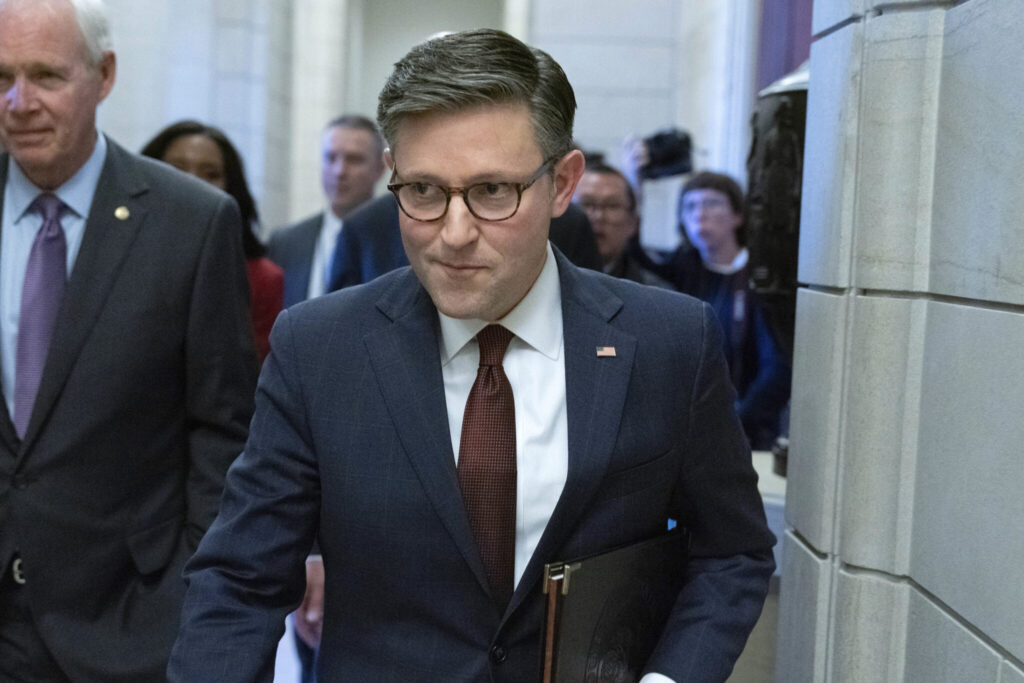
Despite an unusual structure that sets different funding deadlines for different parts of the government, Johnson’s CR amounts to a “clean” bill without spending cuts, policy provisions or other strings attached – the kind of measure that led to the historic ouster of his predecessor, Kevin McCarthy, by his right flank.
Congress is engaged in its third fiscal showdown this year, following a months-long spring standoff over the nation’s more than $31 trillion in debt, which brought the federal government to the brink of default.
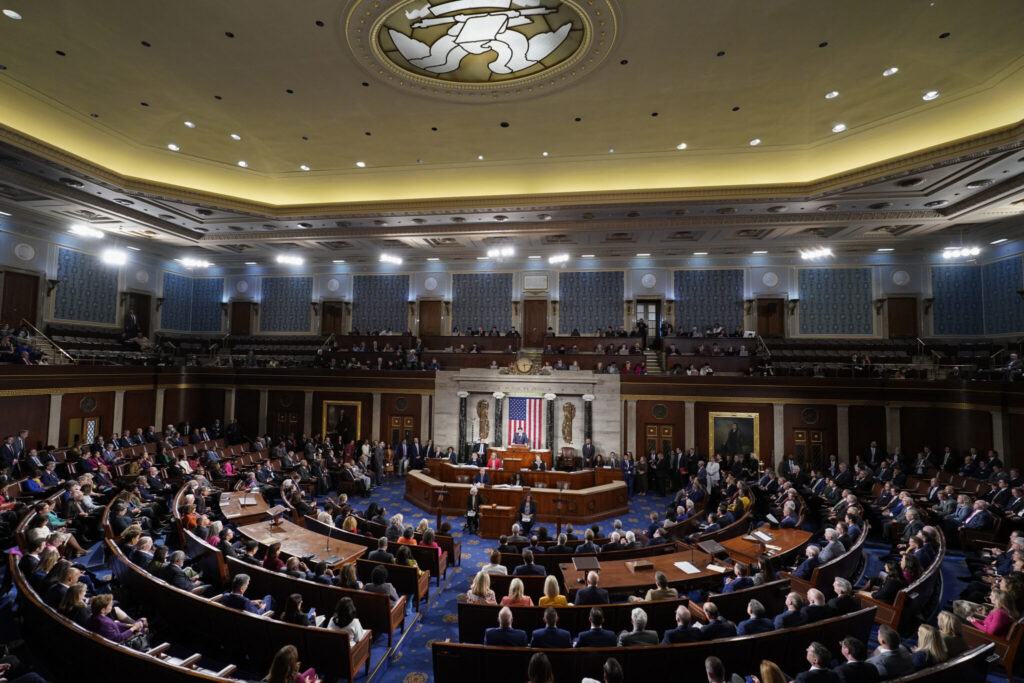
The ongoing partisan gridlock, accentuated by fractures within the narrow 221-212 House Republican majority, led Moody’s late on Friday to lower its U.S. credit rating outlook to “negative” from “stable,” as it noted that high interest rates would continue to drive borrowing costs higher. The nation’s deficit hit $1.695 trillion in the fiscal year ended Sept. 30.
It was not immediately clear what position congressional Democrats would take on the Johnson stopgap measure.
Some indicated they were open to the plan, which would need to pass the Democratic-majority Senate and be signed into law by President Joe Biden by midnight on Friday to avoid disrupting pay for up to 4 million federal workers, shuttering national parks and hobbling everything from financial oversight to scientific research.
WARRING FACTIONS
“I am committed to returning Washington to regular order, but you can’t fix a decades-old broken system in a matter of weeks,” Johnson, a Louisiana lawmaker holding his first senior leadership position in Congress, said on social media on Sunday.
Johnson’s plan seems geared to find support from two warring Republican factions: hardliners who wanted different funding deadlines for different federal agencies and centrists who called for a “clean” vehicle without spending cuts or conservative policy riders that Democrats would reject.
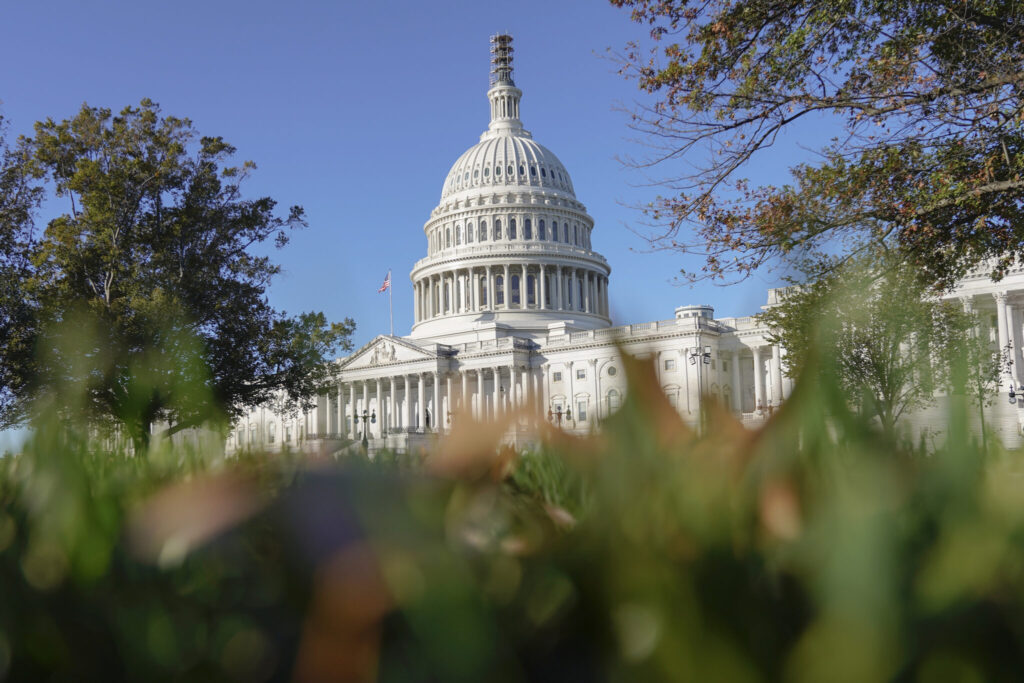
His bill would extend funding for military construction, veterans benefits, transportation, housing, urban development, agriculture, the Food and Drug Administration and energy and water programs through Jan. 19. Funding for all other federal operations, including defense, would expire on Feb. 2.
The bill is intended to pressure the House and Senate to agree on spending bills for fiscal 2024 by the assigned dates. Johnson warned Democrats that House Republicans would impose a full-year CR for 2024 “with appropriate adjustments to meet our national security priorities” if Congress fails to reach agreement on full-year spending.
The approach quickly came under fire from the White House and members of both parties.
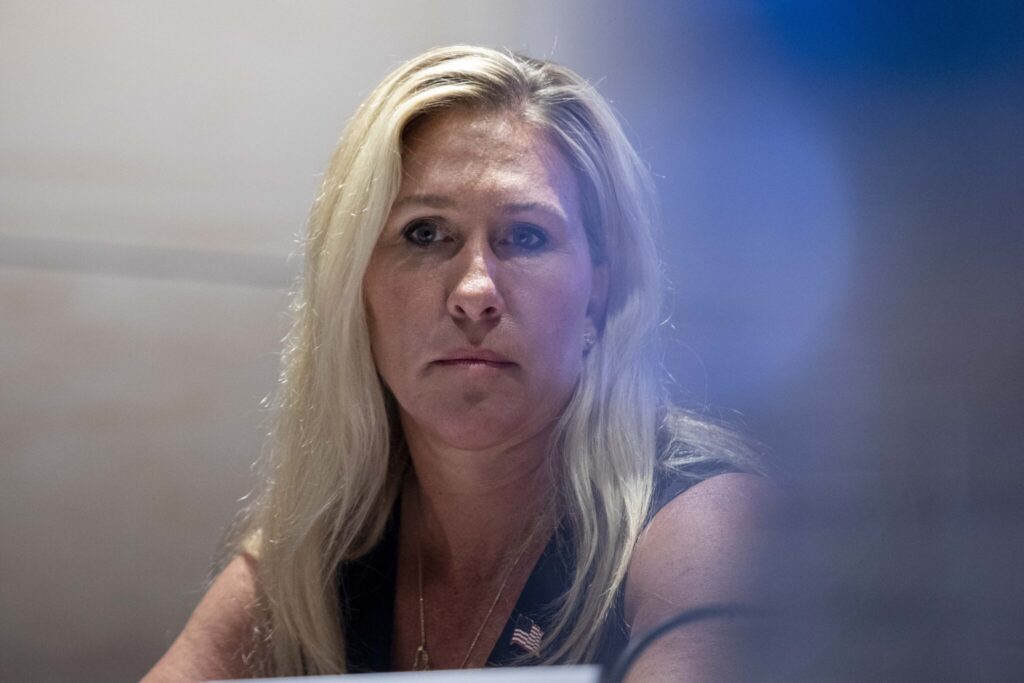
Among hardliners in opposition, Good was joined by Representatives Marjorie Taylor Greene, Warren Davidson, Scott Perry, Andrew Clyde and Chip Roy. Indicted Republican George Santos also said he would not back it.
“I will not support a status quo that fails to acknowledge fiscal irresponsibility, and changes absolutely nothing while emboldening a do-nothing Senate and a fiscally illiterate President,” said Perry, who chairs the ultraconservative House Freedom Caucus, on the X social media platform.
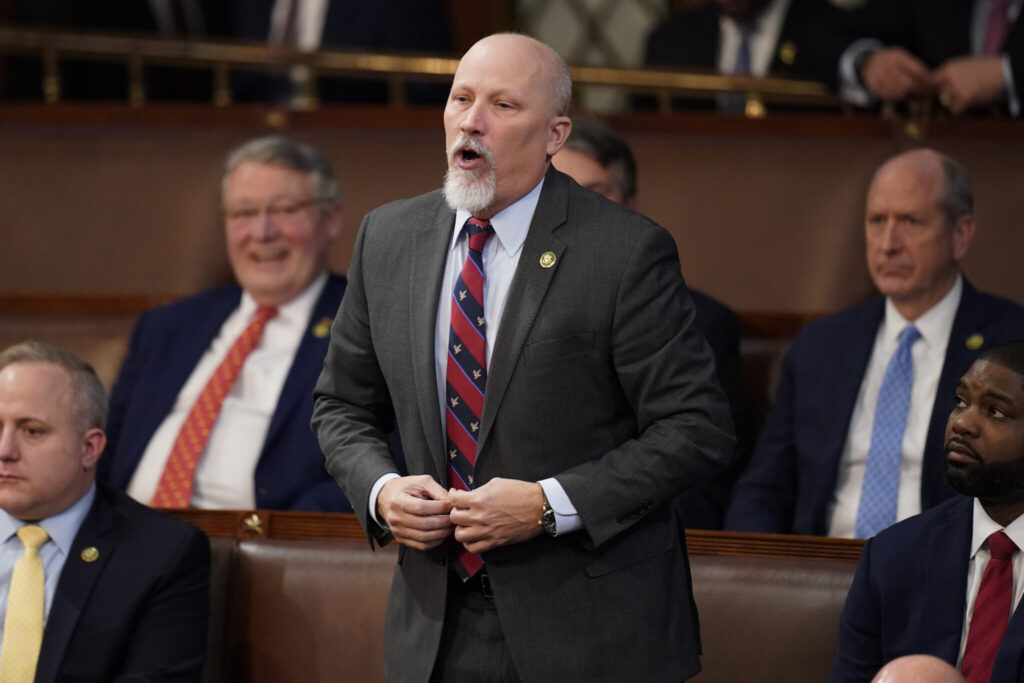
The White House over the weekend blasted the plan as chaotic, but there were also indications that it could provide a path forward for Congress, given Johnson’s decision to assign defense spending to Feb. 2. Democrats had worried that Republicans would put defense and other party priorities in the first tranche and then let the remaining programs shut down.
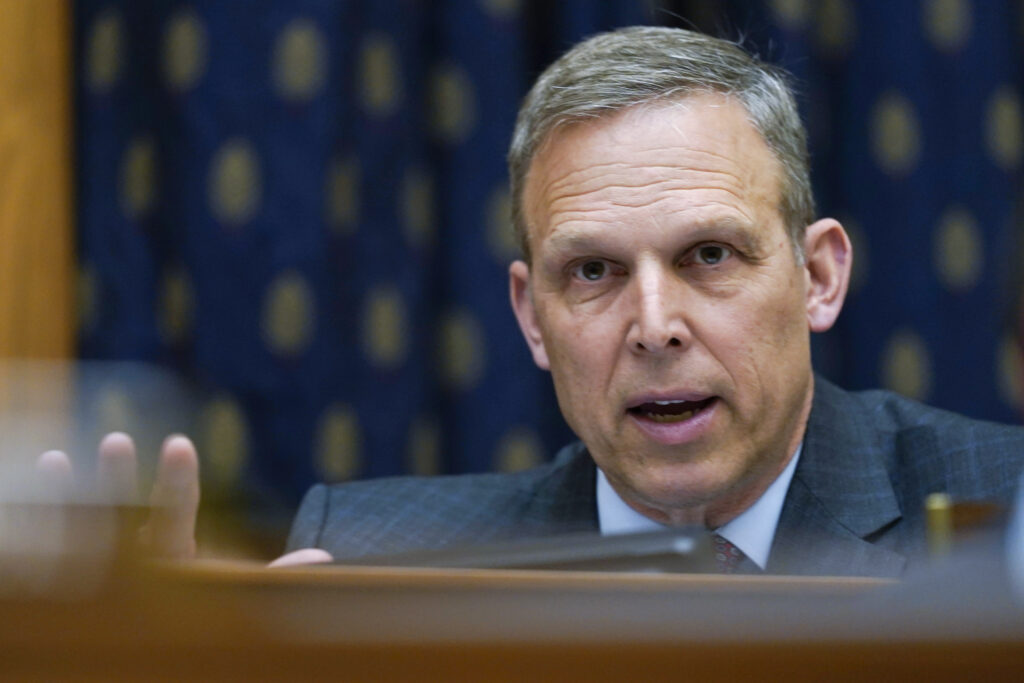
“It’s a good thing the Speaker didn’t include unnecessary cuts and kept defense funding with the second group of programs,” a Senate Democratic leadership aide said.
Democratic Senator Chris Murphy told NBC on Sunday he could support the two-step model: “I don’t like what the House is talking about, but I’m willing to listen.”
BENCHMARK OF SUCCESS
House Republicans are aiming for a Tuesday vote. But it is unclear whether their conference, which has spent the past 10 months at war with itself over spending and culture war issues, can muster the 217 votes needed to pass the measure without Democratic support, which many Republicans view as the benchmark of success.
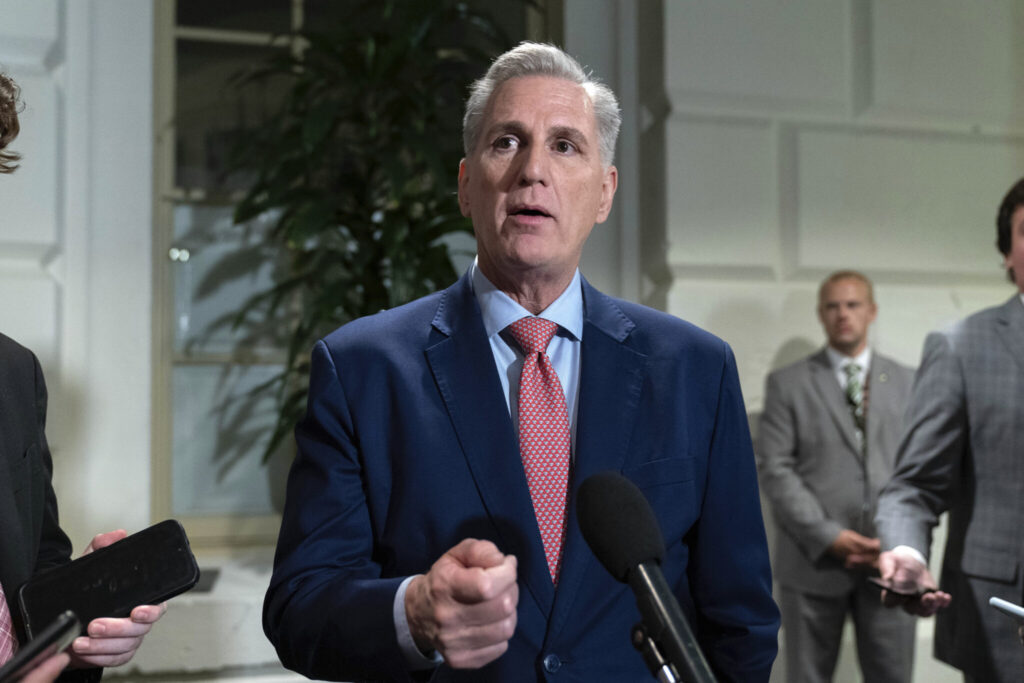
Failure to hit that benchmark led to McCarthy’s ouster, but some House Republicans suggested Johnson deserved more time.
The brutal infighting among Republicans this year, including the party’s own rejection of three seasoned nominees for House speaker, coincides with falling federal revenues and mounting costs for interest, health and pension outlays.
Lawmakers are at odds over discretionary spending for fiscal 2024. Democrats and many Republicans want to stick to the $1.59 trillion level that Biden and McCarthy set in their debt ceiling agreement earlier this year. Hardliners have pushed for a figure $120 billion lower. In recent days, they have signaled a net willingness to compromise.
But the political fracas is focused on just a fraction of the total U.S. budget, which also includes mandatory outlays for Social Security and Medicare. Total U.S. spending topped $6.1 trillion in fiscal 2023.







